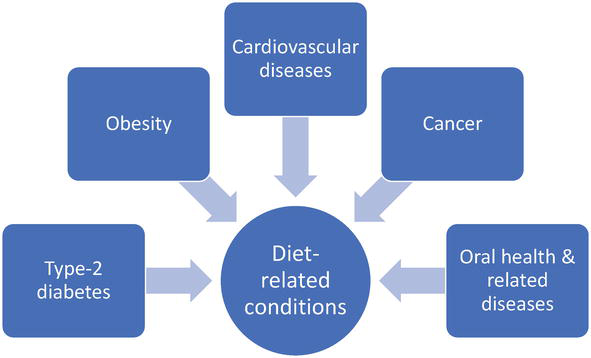
Walking is the main method of locomotion for terrestrial animals. It is slower than other gaits and features an inverted pendulum gait, where the body vaults over stiff joints with each step. Walking, unlike other modes of locomotion is the most efficient. This motion has many advantages. Find out more about the most popular gait for humans.
Walking can lift your mood and encourage you to believe in yourself and your goals. According to one study regular walkers reported better health perceptions, higher levels of well-being and greater satisfaction than non-walkers. Walking is good for your body and soul, as well as helping you to maintain a healthy weight. Walking is an excellent way to meet new friends. There are many benefits to walking. You can walk in your own backyard or at a nearby park.

Walking strengthens the heart. A study of 1,000 women found that people who walked 30 minutes a day reduced their sick days by forty-three percent. They also experienced fewer sick days and more severe symptoms. It doesn't make a difference if you're just starting out with walking, or how experienced you are. Walking can be a great way for more exercise and better health. Keep in mind that physical activity is important to prevent illness. It is easier to stay healthy if you do it more often.
Walking is a great way to reduce stress and raise blood pressure and cholesterol. It improves muscle strength in the lower part of the body, making it easier for seniors to walk. It can also lower the risk of falling and improve mental health. Walking is a good way to help with chronic conditions. It can also help with treatment and management of pain associated with chronic illnesses. If done regularly, it can help reduce depression and even decrease the risk of dementia.
Besides improving your health, walking can help you feel good about yourself. Researchers have shown that a simple walk can make a person happier than a daily commute. The same applies for sedentary people, for example. Even though they lead busy lives, regular walking can help them to get a good night of sleep. While walking is relaxing and enjoyable, there are many other benefits. It improves mood and calms the mind.

A recent study suggests that walking can increase creativity. One study that looked at creative thinking showed that those who walked for one hour per day were more inventive than those who sat. It helped them sleep better, and it was a great way to make friends and listen to audiobooks. It helped her confidence, and her overall health. Walking can be beneficial regardless of age or gender.
FAQ
Exercise: Good for immunity or not?
Your immune system is strengthened by exercise. Your body creates white blood cells when you exercise that fight infection. Your body also eliminates toxins. Exercise is a great way to prevent heart disease, cancer, and other diseases. Exercise can help reduce stress.
Exercising too often can cause your immune system to be weaker. If you work out too hard, your muscles become sore. This can lead to inflammation and swelling. The body then needs to make more antibodies to fight infection. Problem is, extra antibodies can trigger allergies and other autoimmune conditions.
So, don't overdo it!
Here are five ways to lead a healthy lifestyle.
Healthy living means eating right, exercising regularly and getting enough sleep. It also involves managing stress and having fun. You should avoid processed foods, sugar, or unhealthy fats. Exercise can help you burn calories and strengthen your muscles. Getting enough sleep improves memory and concentration. Stress management helps reduce anxiety and depression. Fun keeps us happy and healthy.
How often should I exercise?
Exercise is essential for maintaining a healthy lifestyle. You don't have to exercise for a certain amount of time. It is important to find something that you enjoy and stay with it.
When you exercise three times per week, aim for 20-30 minutes moderate intensity. Moderate intensity means you'll still be breathing hard after you've finished. This type works out burns around 300 calories.
For those who prefer to walk, you can go for 10-minute walks four times a week. Walking is easy on the joints and has low impact.
You can also run for 15 minutes, three times per week. Running is a great way to burn off excess calories and build muscle tone.
You can start slow if you're new to exercise. You can start with only 5 minutes per week of cardio. Gradually increase duration until you achieve your goal.
What is the problem?
BMI stands for Body Mass Index. This is a measure of body fat that is calculated based on height or weight. The following formula can be used to calculate BMI.
Weight in kilograms divided by height in meters squared.
The result can be expressed as a number between zero and 25. A score greater than 18.5 is considered overweight. A score greater than 23 is considered obese.
A person who is 100 kg in weight and 1.75m in height will have a 22 BMI.
Which are the top 10 foods you should eat?
These are the 10 best foods you can eat:
-
Avocados
-
Berries
-
Broccoli
-
Cauliflower
-
Eggs
-
Fish
-
Grains
-
Nuts
-
Oats
-
Salmon
Statistics
- WHO recommends consuming less than 5% of total energy intake for additional health benefits. (who.int)
- nutrients.[17]X Research sourceWhole grains to try include: 100% whole wheat pasta and bread, brown rice, whole grain oats, farro, millet, quinoa, and barley. (wikihow.com)
- WHO recommends reducing saturated fats to less than 10% of total energy intake; reducing trans-fats to less than 1% of total energy intake; and replacing both saturated fats and trans-fats to unsaturated fats. (who.int)
- According to the 2020 Dietary Guidelines for Americans, a balanced diet high in fruits and vegetables, lean protein, low-fat dairy and whole grains is needed for optimal energy. (mayoclinichealthsystem.org)
External Links
How To
What does the meaning of "vitamin?"
Vitamins are organic compounds naturally found in food. Vitamins allow us to absorb nutrients from food. Vitamins are not made by the body, so they must be obtained through food.
There are two types: water-soluble and fat-soluble vitamins. Water-soluble vitamins dissolve easily when they are dissolved in water. These include vitamin C (thiamine), Vitamin B1 (riboflavin), Vitamin B2 (riboflavin), Vitamin B3 (niacin), Vitamin B6 (pyridoxine), Vitamin C, B1 (thiamine), Vitamin B2 (riboflavin), Vitamin B3 (niacin), and Vitamin B6 (pyridoxine). The liver and fat soluble vitamins are stored within the liver and in fatty tissue. Some examples include vitamin D and E, K, A and beta carotene.
Vitamins are classified according their biological activity. There are eight major types of vitamins:
-
A - Vital for normal growth and maintaining good health.
-
C - important for proper nerve function and energy production.
-
D - necessary for healthy bones and teeth.
-
E - needed for good vision and reproduction.
-
K - required for healthy muscles and nerves.
-
P - Essential for strong bones and teeth.
-
Q – aids digestion of iron and iron absorption
-
R - necessary for making red blood cells.
The recommended daily allowance of vitamins (RDA), varies according to age, gender, physical condition, and other factors. The U.S. Food and Drug Administration has established the RDA values.
For adults over 19, the RDA for vitaminA is 400 micrograms per daily. Pregnant mothers need 600 micrograms per days because it is vital for the development and growth of their baby. Children ages 1-8 require 900 micrograms per day. Infants below one year old require 700mg per day. But, between 9 months to 12 months, the amount drops to 500mg per day.
Children aged between 1-18 years require 800 micrograms of sugar per day, while overweight children need 1000 micrograms. Children who are underweight receive 1200 micrograms every day to meet their nutritional requirements.
Children between 4 and 8 years old with anemia will need 2200 micrograms daily of vitamin C.
2000 micrograms per person is necessary for general health. Because of their higher nutrient needs, women who are pregnant or nursing need 3000 mg per day.
1500 micrograms is the recommended daily intake for adults aged 70+, who lose approximately 10% of muscle each year.
Women who are pregnant or nursing need more than the RDA. Pregnant women need 4000 micrograms per dayduring pregnancy and 2500 micrograms per day after delivery. Breastfeeding mothers require 5000 micrograms daily when breast milk production is occurring.